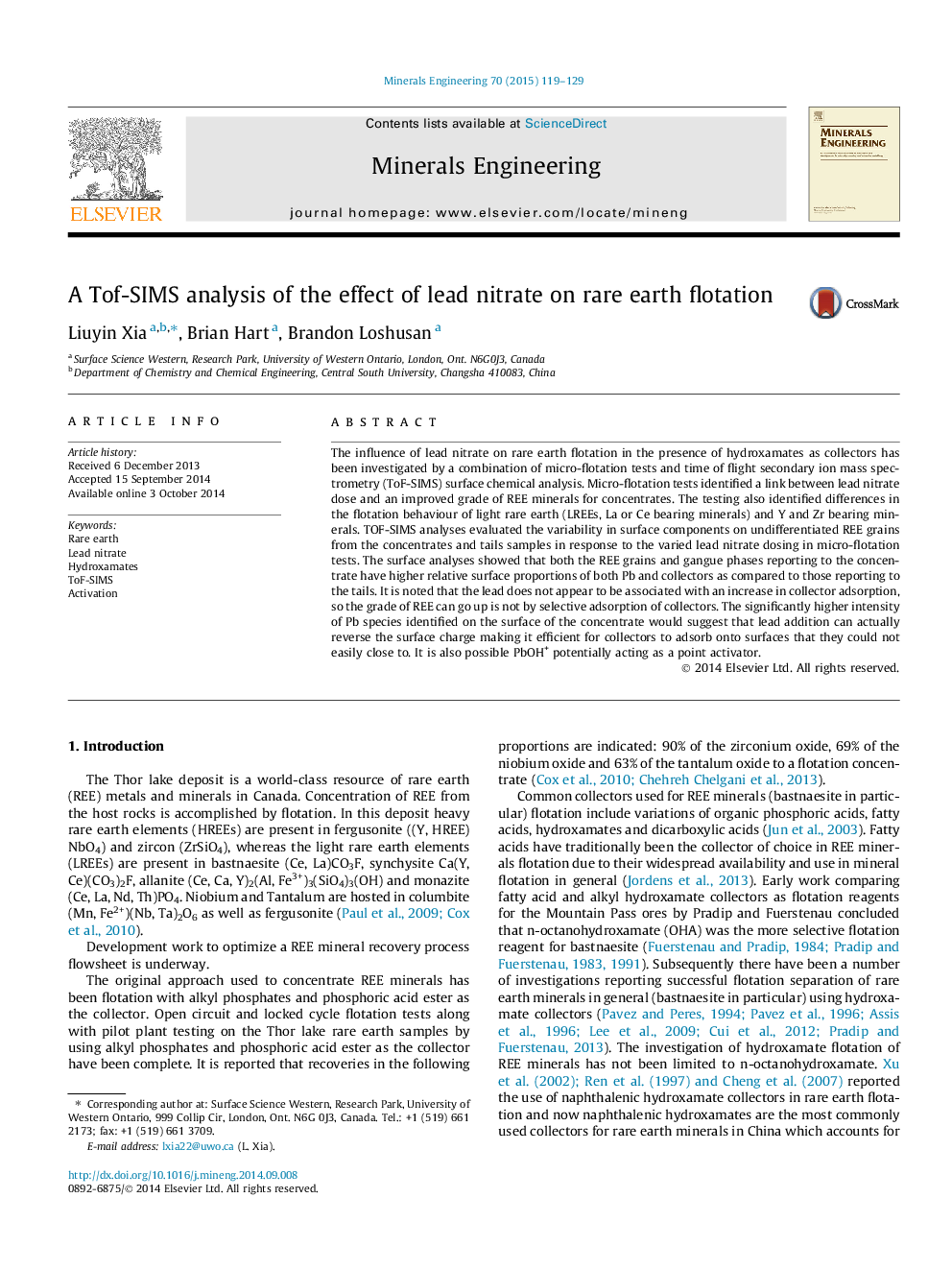| Article ID | Journal | Published Year | Pages | File Type |
|---|---|---|---|---|
| 233025 | Minerals Engineering | 2015 | 11 Pages |
•Lead nitrate was shown to be an activator for rare earth flotation.•The enhancement of LREE and HREE by lead nitrate is identified different.•Pb species adsorbs onto the concentrate surface.•Hydroxamates chemisorbs to the mineral surface possibly via the PbOH+.
The influence of lead nitrate on rare earth flotation in the presence of hydroxamates as collectors has been investigated by a combination of micro-flotation tests and time of flight secondary ion mass spectrometry (ToF-SIMS) surface chemical analysis. Micro-flotation tests identified a link between lead nitrate dose and an improved grade of REE minerals for concentrates. The testing also identified differences in the flotation behaviour of light rare earth (LREEs, La or Ce bearing minerals) and Y and Zr bearing minerals. TOF-SIMS analyses evaluated the variability in surface components on undifferentiated REE grains from the concentrates and tails samples in response to the varied lead nitrate dosing in micro-flotation tests. The surface analyses showed that both the REE grains and gangue phases reporting to the concentrate have higher relative surface proportions of both Pb and collectors as compared to those reporting to the tails. It is noted that the lead does not appear to be associated with an increase in collector adsorption, so the grade of REE can go up is not by selective adsorption of collectors. The significantly higher intensity of Pb species identified on the surface of the concentrate would suggest that lead addition can actually reverse the surface charge making it efficient for collectors to adsorb onto surfaces that they could not easily close to. It is also possible PbOH+ potentially acting as a point activator.
